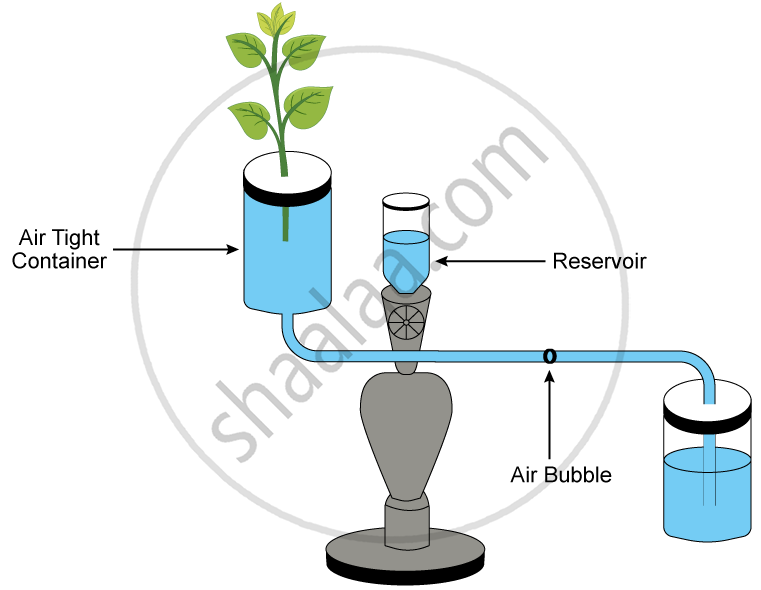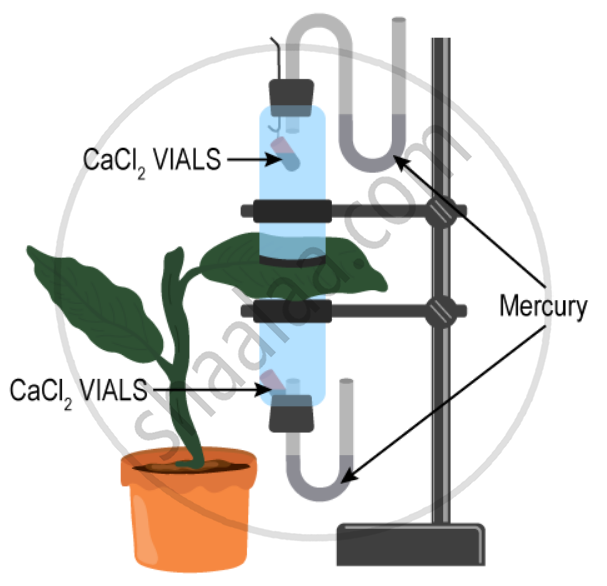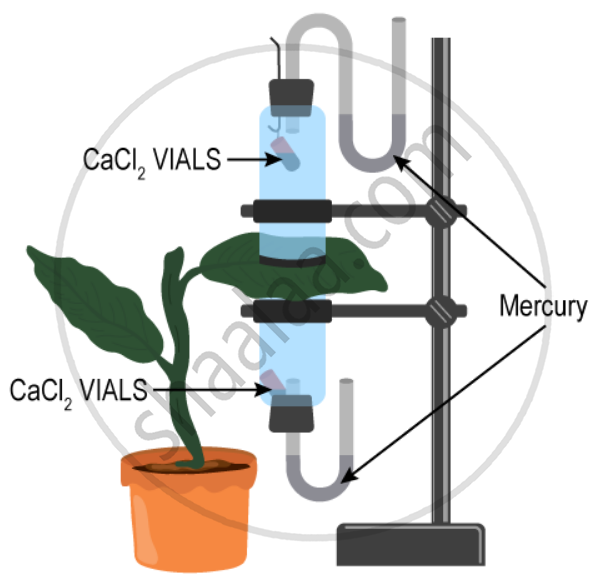Advertisements
Advertisements
Question
What is lenticular transpiration? Mention one major difference between lenticular transpiration and stomatal transpiration.
Solution
Transpiration occurring through lenticels i.e. minute openings on the surface of old stems is called lenticular transpiration.
Stomatal transpiration is controlled by the plant by altering the size of the stoma, where as this does not happen in case of lenticular transpiration. This is because the lenticels never close, but remain open all the time.
The amount of stomatal transpiration is much more than the amount of lenticular transpiration.
APPEARS IN
RELATED QUESTIONS
Which of the following statements are true and which ones are false? Give reason in support of your answer.
Forest contribute in bringing rains.
The apparatus shown here is Ganong's photometer designed to demonstrate unequal transpiration from the two surfaces of a dorsiventral leaf. Before keeping the leaf in between the cups, anhydrous calcium chloride (CaCl2) contained in two small vials were weighted and placed in both the cups. The ends of the cups were weighted and with corks through which two mercury manometers were connected. After a few hours, CaCl2 vials were taken out and weighed again.
(i) What is the purpose of keeping CaCl2 vials inside the cup?
(ii) After a few hours, CaCl2 vials were taken out and weighed again.
will you except any difference in weight? If so, give reasons.
(iii) What was expect the purpose of using a manometer?
(iv) What do you mean by transpiration?

Given below is the diagram of an apparatus used to study a particular phenomenon in plants:

What is the use of the reservoir?
Given below is the diagram of an apparatus used to study a particular phenomenon in plants:

What happens to the movement of the air-bubble if the apparatus is kept:
(i) In the dark
(ii) In sunlight
(iii) In front of a fan
Give a reason in each case.
The apparatus shown in the following diagram is Garreau’s potometer designed to demonstrate unequal transpiration from the two surfaces of a dorsiventral leaf Before keeping the leaf in between the cups, anhydrous calcium chloride (CaCl2) contained in two small vials were weighed and placed in both the cups. The ends of the cups were closed with corks through which two mercury manometers were connected. After few hours, CaCl2 vials were taken out and weighed again.

What is the purpose of keeping CaCl2 vials inside the cup?
The apparatus shown in the following diagram is Garreau’s potometer designed to demonstrate unequal transpiration from the two surfaces of a dorsiventral leaf. Before keeping the leaf in between the cups, anhydrous calcium chloride (CaCl2) contained in two small vials were weighed and placed in both the cups. The ends of the cups were closed with corks through which two mercury manometers were connected. After few hours, CaCl2 vials were taken out and weighed again.

After few hours CaCl2 vials were taken out and weighed again. Will you expect any difference in weight? If so, give reason.
Mention, if the following statement is True or False. If false rewrite the wrong statement in its correct form:
Potometer is an instrument, used for measuring the rate of transpiration
Match the terms given in column A with column B:
| Column A | Column B | ||
| (a) | Hydathodes | (i) | Photosynthesis |
| (b) | Stomata | (ii) | Respiration |
| (c) | Cuticle | (iii) | Regulates opening and closing of stomata |
| (d) | Lenticels | (iv) | Reduces loss of water |
| (e) | Guard cells | (v) | Guttation |
Name four kinds of potometers on the basis of the names of the scientists who discovered them.
Define the following term:
Potometer
